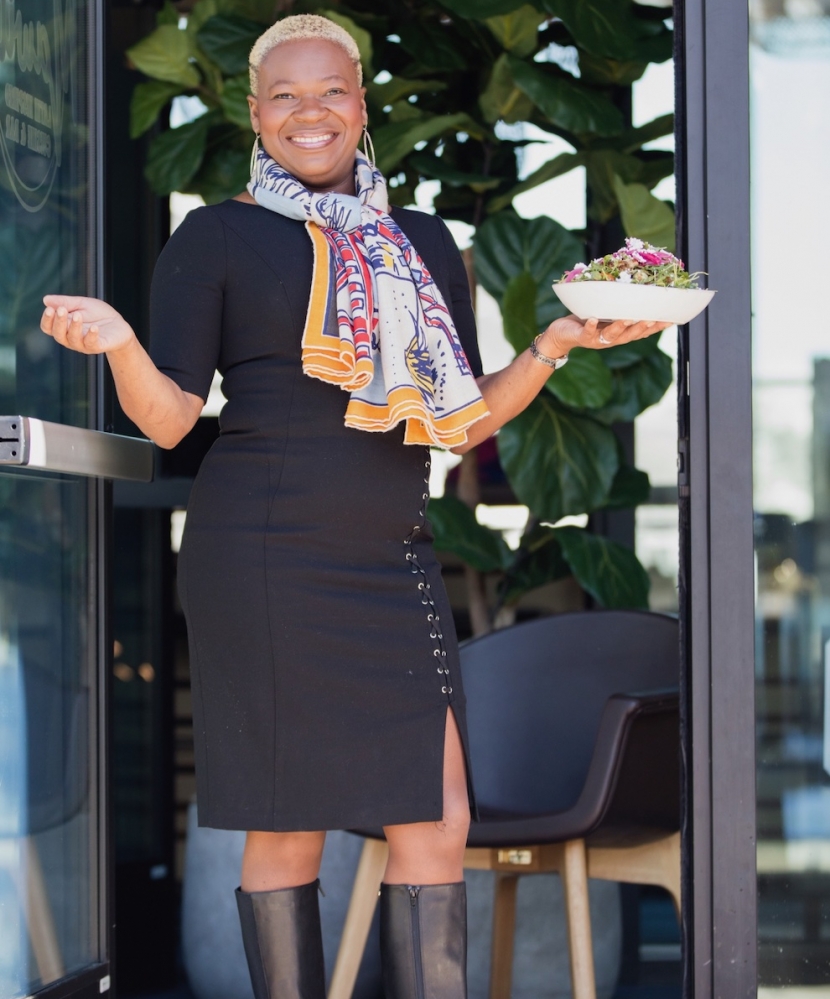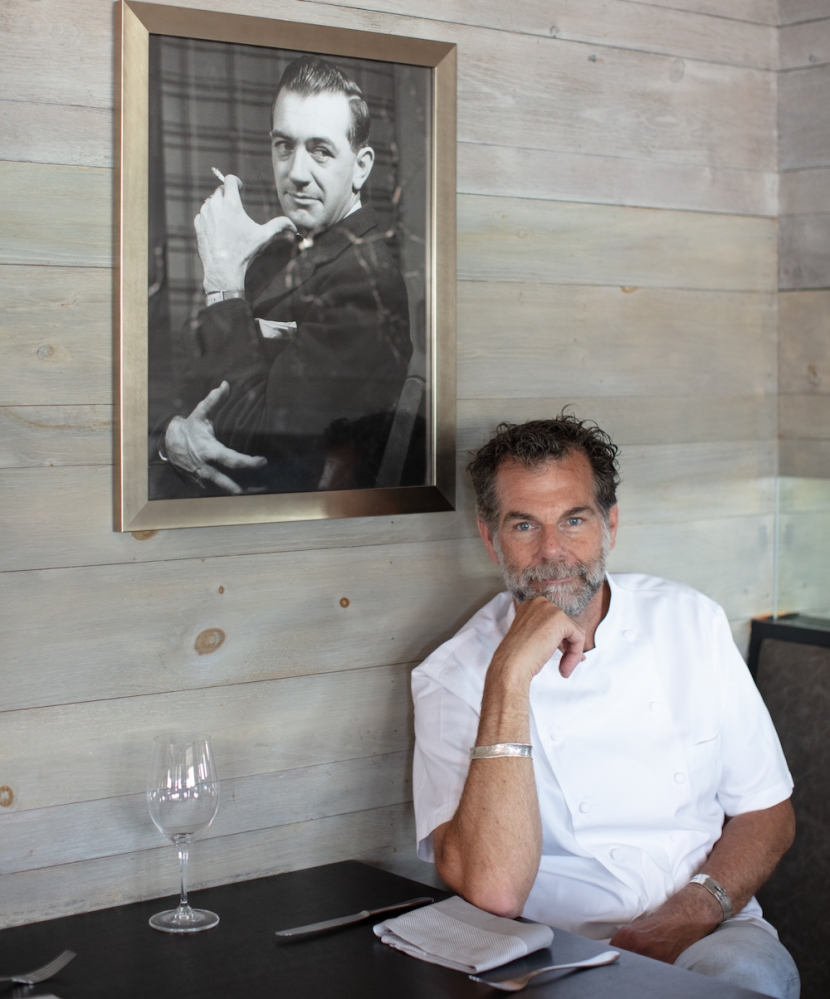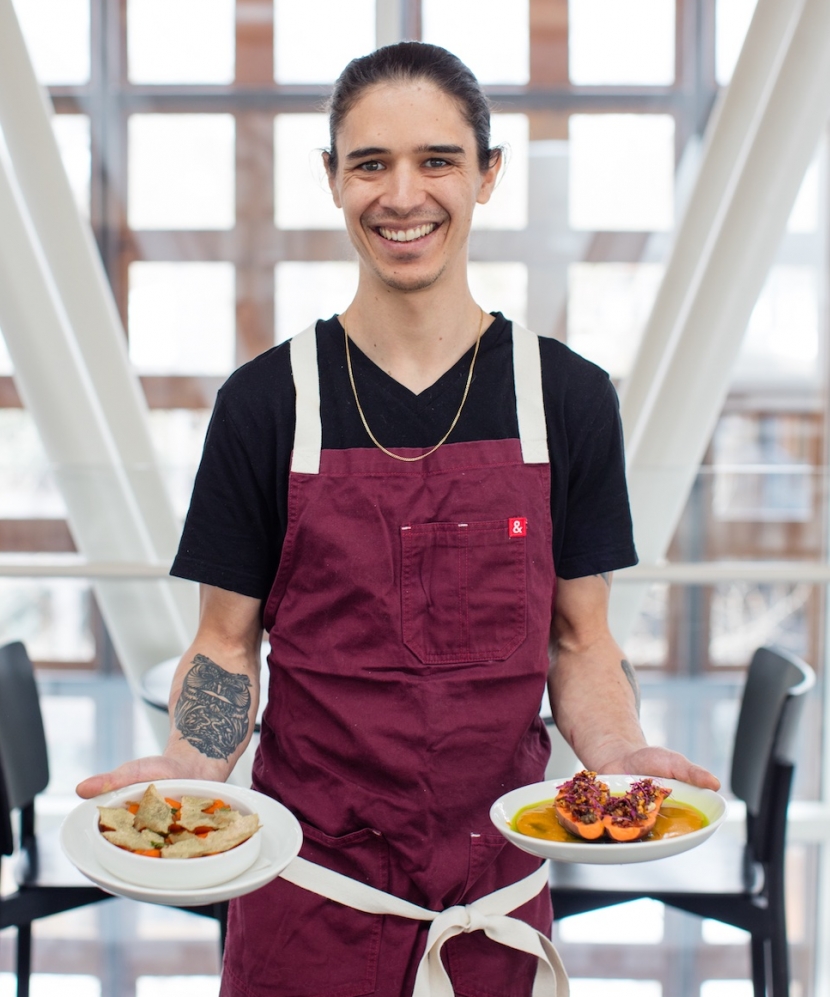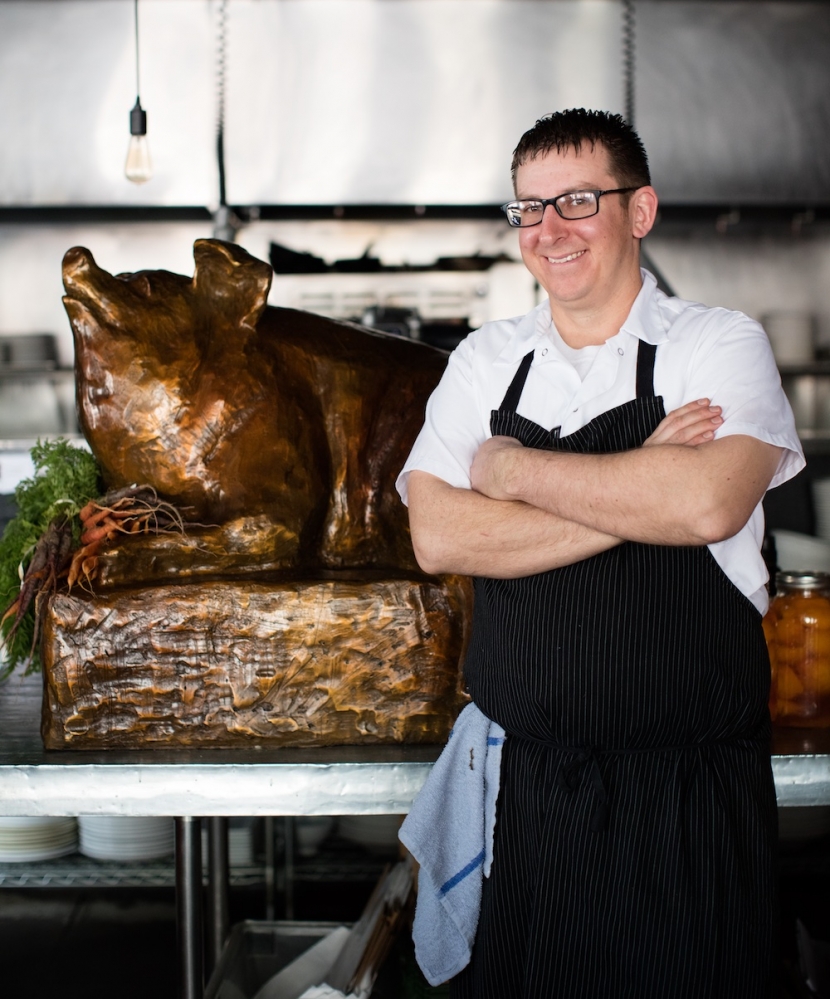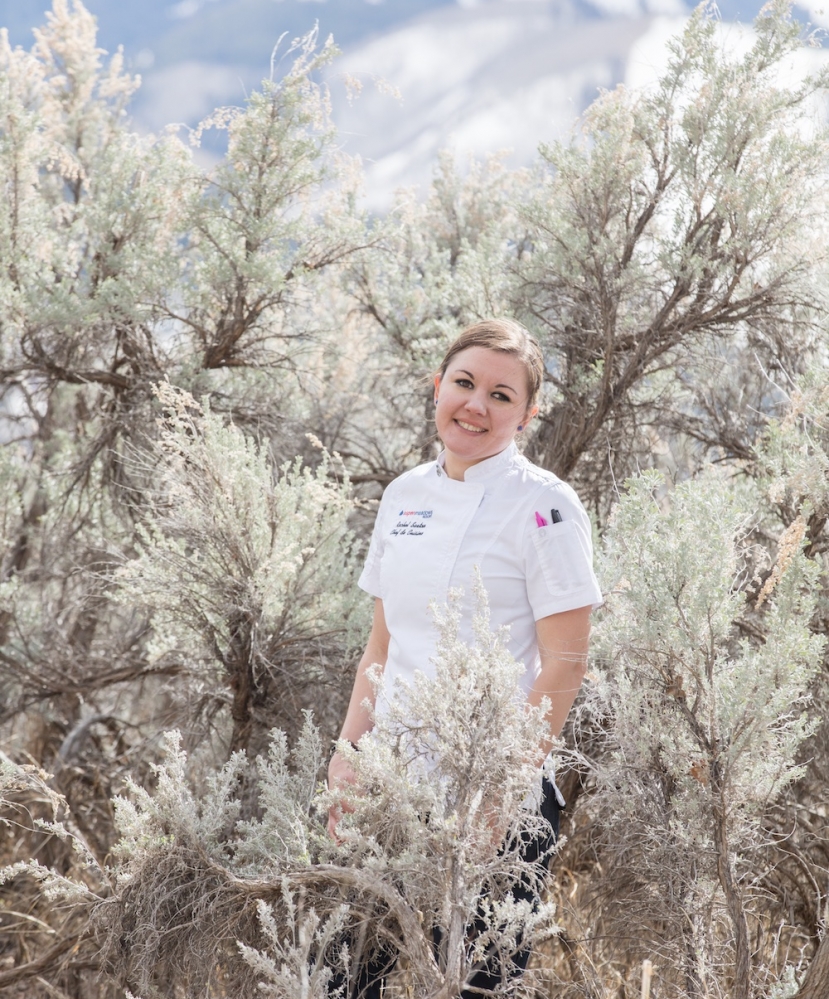Someone's in the Kitchen
But not just anyone. These Roaring Fork Valley chefs take their cues from what they can find nearby, working with local ingredients in innovative ways. Here’s a peek behind the kitchen door, as some of our favorite local chefs share what inspires and nourishes them.
MAWA McQUEEN
Mawa’s Kitchen, Mawita’s, The Crêpe Shack
Favorite local ingredient
Heirloom tomatoes. They’re just so versatile.
Cuisine you’re known for
Afro-French-Mediterranean: a combination of my culture and heritage (African and French) and the flavors that inspire me the most (Mediterranean)
What dish best represents your relationship with local food?
My summer salad, made with heirloom tomatoes, either strawberries or peaches (depending on the season), fresh basil, corn, pomegranate gastrique. Everything is local and seasonal except for the pomegranates; it perfectly shows off what our valley can produce.
What do you wish was being produced locally that is not?
More farm-raised, free-range chicken
Why do you cook?
I cook because it is how I create and can make a mark on the world. It’s how I express myself and share my love and gratitude with everyone.
Tell us something about your local food experience.
My first local food experience was at The Little Nell with Farmer Jack. He was the first one to bring products from Paonia. He was so passionate about this, he didn’t make any money doing it, and I worked out a trade with him that he could wash his product and sleep at my restaurant in exchange for fresh produce.
If money was not an issue, what would you cook?
I honestly don’t think much about money. I cook what I want, when I want, and worry about the money part later.
BARCLAY DODGE
Bosq
Favorite local ingredient
It’s a toss-up between wild watercress and young blue spruce tips.
Cuisine you’re known for
Local cuisine from forests and farms—we are inspired by our local environment.
What dish best represents your relationship with local food?
We change our menu so frequently that I cannot say which one is the best representation. An example of a dish that’s seasonally appropriate is our Deer and Parsnip Bark with Summer Pea and Lilac.
What do you wish was being produced locally that is not?
We’ve got all I could ask for!
Why do you cook?
I cook because I enjoy being creative, working with raw ingredients, refining technique, and collaborating with fellow cooks.
Tell us something about your local food experience.
In the early 2000s I opened Mogador and started working with local farms and wild ingredients. But it wasn’t until September 2014 that I connected on a deeper consciousness with local food. I was invited to participate in Sustainable Settings’ Harvest Fest. Early in the morning a slew of local chefs slaughtered a few lambs and a pig, picked through the gardens and fields, then cooked all day creating a bountiful spread for a few hundred guests to enjoy. We used everything from the ranch. That was when I got really fired up with our local producers and wildcrafting.
If money was not an issue, what would you cook?
I would keep doing exactly what I am doing now. However, I would install a new dream kitchen with plenty of room for a passionate team of cooks who want to learn and deepen their knowledge and practice of our craft.
JOEY SCARLETT
The Farmer and The Chef, Rooftop Café at Aspen Art Museum
Favorite local ingredient
It once was carrots and still is, but hakurei turnips have been a recent favorite.
Cuisine you’re known for
Elevated café food that’s not so simple. Fluid: I want to take an unexpected turn with each dish and surprise our guests.
What dish best represents your relationship with local food?
We try to keep a rotating carrot special almost year-round, because of their availability and storage capacity. The iteration of this evolves with each change in season. A recent favorite was honey-roasted carrots served with miso carrot purée.
What do you wish was being produced locally that is not?
I appreciate all the hard work from our local farming community despite the variables they have to work around. I only wish I could get more of their amazing produce sometimes. We chefs sometimes lose sight of the challenges Western Slope farmers face and expect them to work around our wants and needs when it should be the other way around. We can be better about showing the respect and appreciation they deserve. I think this will make us more innovative.
Why do you cook?
Because I enjoy it and grew up around my grandmother, Takako, an immigrant from Japan who was always in the kitchen cooking Japanese food: miso soup, gyoza, red bean steamed buns. I also look at it as art—I was never very artistically gifted and always wanted to be. Food and cooking gave me that outlet to creatively express myself.
Tell us something about your local food experience.
The pandemic fueled our [his and wife/business partner Tiffany Pineda’s] move to the Roaring Fork Valley and I was truly inspired. My first day at the former 7908, I looked at the summer squash and zucchini from Two Roots and thought, “Wow! These can’t be real, they look so perfect.” As a Colorado native, and never having seen produce this incredible, I was blown away. And my wife was doing an internship at Sustainable Settings and seeing all of the amazing things coming from there, in the middle of the Rocky Mountains.
If money was not an issue, what would you cook?
I would cook the same food with a little variation: cook everything over a live fire. The flavors created from open-fire cooking cannot be replicated in any other way. It’s cooking through feeling more than just going through the motions.
JOHN LITTLE
The Pullman
Favorite local ingredient
Desert Spirit squash from Seed Peace: a beautiful dense winter squash with a pleasant sweetness
Cuisine you’re known for
Approachable and playful
What dish best represents your relationship with local food?
This last year was a crazy year for chanterelles growing near Glenwood. We paired them simply with Wagyu beef from Cross Creek Ranch. We used them in fresh pastas with Olathe corn and local charcuterie. My sous chef even made a chanterelle and apricot sorbet that we used for intermezzos.
Why do you cook?
I cook because I enjoy making people happy and helping to connect a community. The sense of community with farmers, purveyors, guests, and staff is unlike anything else. Most of these people are passionate, selfless individuals who do it because they care. A great restaurant can bring a sense of community together unlike anything else. Cooking brings people together, and I feel that’s more important now than ever.
Tell us something about your local food experience.
I’ve had the pleasure of working at lots of great restaurants, but the one that gave me the best understanding of local food was at Blackberry Farm in Tennessee. We raised 300 head of sheep to make cheese. We worked with tons of local producers, farmers, and foragers. There was even a master gardener in charge of tending to a small farm. When working with people that passionate, we weren’t cooking as much as we were storytelling.
If money was not an issue, what would you cook?
I’d love to have a cottage in the woods with a small farm where we cooked for 20 people a night. Menu based on what we grew that day. A place that makes you feel like you’re going to an Italian grandmother’s house—maybe a slightly grumpy grandma’s house that enjoys a cocktail or three and enjoys telling stories while laughing till your stomach hurts.
RACHEL SEXTON
Plato’s at the Aspen Meadows Resort
Favorite local ingredient
Porcinis—their flavor and texture add an extraordinary punch to any dish and have the ability to shine alone as well.
Cuisine you’re known for
Seasonal and local products used in a unique way but still approachable.
What dish best represents your relationship with local food?
I don’t have just one in mind. I love showcasing local ingredients as the highlight of the dish and then adding other components that help showcase the star of the plate.
Why do you cook?
The easiest answer is I love food. Not just the flavors, but every aspect of food. I love tromping in the woods for edible items. I love watching talented farmers grow outstanding products. I love showing respect to the animals slaughtered so that we can eat. The entire cycle of where our food starts and the journey that it takes to get to our plate is what fascinates me. I love trying to show nature and a story on every plate.
Tell us something about your local food experience.
I was lucky to experience the concept of using local food at a young age, growing up in Missouri and the granddaughter of an Illinois-based farm family. My grandfather had a large farm where he grew lots of things—the sweet corn and orchard were my favorites. We would drive up to visit multiple times a summer to “put up” corn, pick stone fruits, help everyone preserve them for the winter. My ultimate favorite was picking the last of the apples every fall, gathering the entire family (there’s a lot of us!), and making gallons upon gallons of apple cider. In Missouri, my parents always had a huge garden with fresh produce all growing season; early spring peas were my favorite. There is truly something magical about eating dinner after you spent the day picking and working for all of the items.
KAMRON HOOKER
Free Range Kitchen
Favorite local ingredient
Local mushrooms: porcinis, morels, oyster mushrooms. They can be a direct flavor or take on and meld with other flavor profiles—they’re a nonrestrictive ingredient.
Cuisine you’re known for
Modern American. Modern because we present things in a very nice way, American because it’s the melting pot—real American food is a worldly cuisine.
What dish best represents your relationship with local food?
Our vegetable curry. Everything is super local besides the rice and coconut milk. We use all the vegetables Casey [Piscura] from Seed Peace in Carbondale can give us. A lot of the herbs come from Grand Junction. The sauce for our summer curry is a yellow curry—we add Olathe corn. From top to bottom it’s a representation of this area because 80 percent of the ingredients are from the valley or from a stone’s throw away.
What do you wish was being produced locally that is not?
Being from Florida, all the fish. It’s different once it gets frozen—and if it travels here it has to be frozen. Nothing compares to getting fish off the boat.
Why do you cook?
I was a fat kid before I was chef—I always liked to eat. I was getting into a bunch of trouble in high school, and my mom took me to a vocational culinary school. I gave it a try and have been addicted ever since. It’s my outlet that feels natural—it comes to me and doesn’t feel like a strain or a push.
Tell us something about your local food experience.
What really got me into the headspace of local was working at this restaurant in Boulder, Arcana (it’s no longer open), where the chef was trying to define Colorado cuisine. In the summer everything we got was from in and around Boulder, the mountains—everything was from in state. Going into winter was more of a challenge. But every day this guy would come—I don’t think the health inspector knew—with live trout he caught and was selling out of his cooler. It was the best trout I ever had.
If money was not an issue, what would you cook?
I would go for Michelin stars. One day I want to start a restaurant group that has all aspects of cooking. I want to compete with places like Chick-fil-A and Chipotle, but I also want a restaurant where you go in and every dish is a poem, an exquisite experience. Once I get to that point in my career I will have had the whole journey of food.



